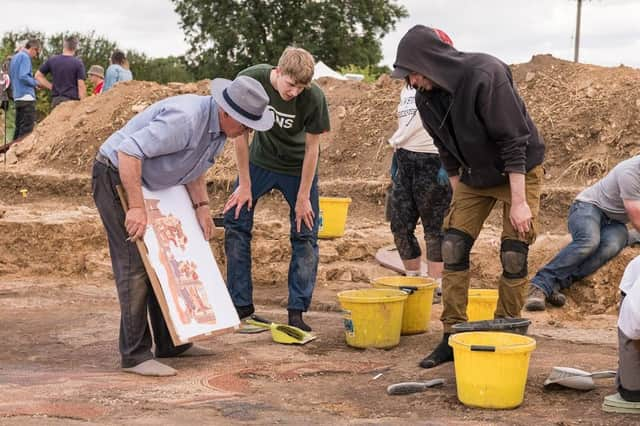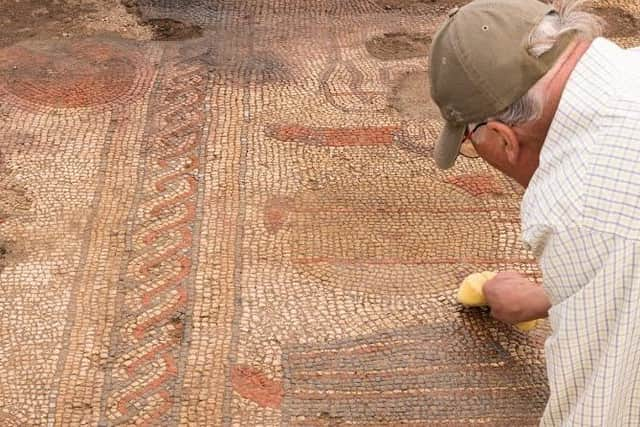Rare Roman mosaic and villa unearthed in Rutland


The find has been protected as a Scheduled Monument by DCMS on the advice of Historic England. The decision follows archaeological work undertaken by a team from University of Leicester Archaeological Services (ULAS), working in partnership with Historic England and in liaison with Rutland County Council.
The initial discovery of the mosaic was made during the 2020 lockdown by Jim Irvine, son of landowner Brian Naylor. Further excavation involving staff and students from the University of Leicester’s School of Archaeology and Ancient History examined more of the site in September 2021. The remains of the mosaic measure 11m by almost 7m and depict part of the story of the Greek hero Achilles.
Advertisement
Hide AdAdvertisement
Hide AdThe artwork forms the floor of what’s thought to be a large dining or entertaining area. Mosaics were used in a variety of private and public buildings across the Roman Empire, and often featured famous figures from history and mythology. However, the Rutland mosaic is unique in the UK in that it features Achilles and his battle with Hector at the conclusion of the Trojan War and is one of only a handful of examples from across Europe.


The room is part of a large villa building occupied in the late Roman period, between the 3 rd and 4 th century AD. The villa is also surrounded by a range of other buildings and features revealed by a geophysical survey and archaeological evaluation, including what appear to be aisled barns, circular structures and a possible bath house, all within a series of boundary ditches. The complex is likely to have been occupied by a wealthy individual, with a knowledge of classical literature.
Richard Clark, County Archaeologist for Leicestershire and Rutland, said: “This has been the most extraordinary of discoveries, and for that, full tribute must be paid to Jim and his family for their prompt and responsible actions. It has been a privilege to have been involved in the investigation and a pleasure to have worked with such a skilled group of amateurs and professionals. The villa, its mosaic and the surrounding complex is the most outstanding find in the recent archaeological history of Rutland, placing the county on a national and international stage and providing a vivid insight into the life and demise of the local Romano-British elite at a time of remarkable change and upheaval.”
The discovery of the Rutland villa and filming as the mosaic is uncovered for the first time in over 1,500 years will be featured as part of Digging for Britain when it returns to BBC Two and iPlayer in early 2022.
Advertisement
Hide AdAdvertisement
Hide AdAlicia Kearns, MP for Rutland and Melton, said: “It’s incredibly exciting, for archaeologists as well as for tourism in our county, to see such an incredible, and unique mosaic discovered. Congratulations to Jim for his extraordinary find!
“ I hope that the mosaics will stay here in Rutland – and be a draw for fans of Roman history to come here from all over the country and world.”